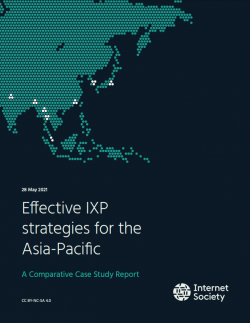Internet exchange points (IXPs) play a vital role in bringing better, faster, and more affordable Internet to people. Though IXPs have grown considerably in the last two decades in Asia-Pacific, that growth has been uneven.
In partnership with the Asia Pacific Internet Exchange Association (APIX), we set out to explore how different exchanges fit into their local environment to find best strategies and approaches they can employ to grow more efficiently.
In this study, we examine how peering has evolved across Asia-Pacific by interviewing nine IXPs at different stages of development and comparing with IXPs in other regions.
The study reflects on the current outlook of Internet peering in Asia-Pacific, and how IXPs are contributing to bringing faster, affordable, and resilient connectivity to people at country levels. It highlights how key IXP features such as business model, number and type of members, and traffic volumes enable stability and growth.
Finally, the report’s key findings and recommendations outline how to effectively grow and sustain IXPs in the region.
Effective IXP strategies for the Asia-Pacific
A Comparative Case Study Report
